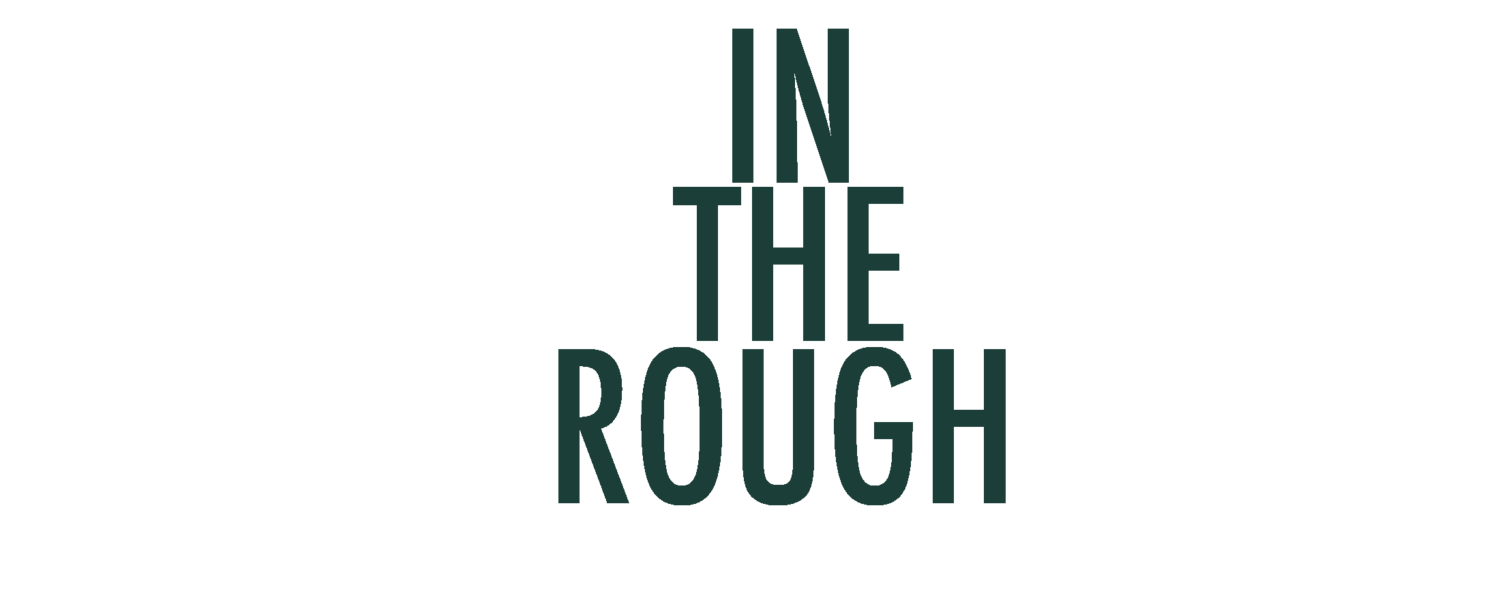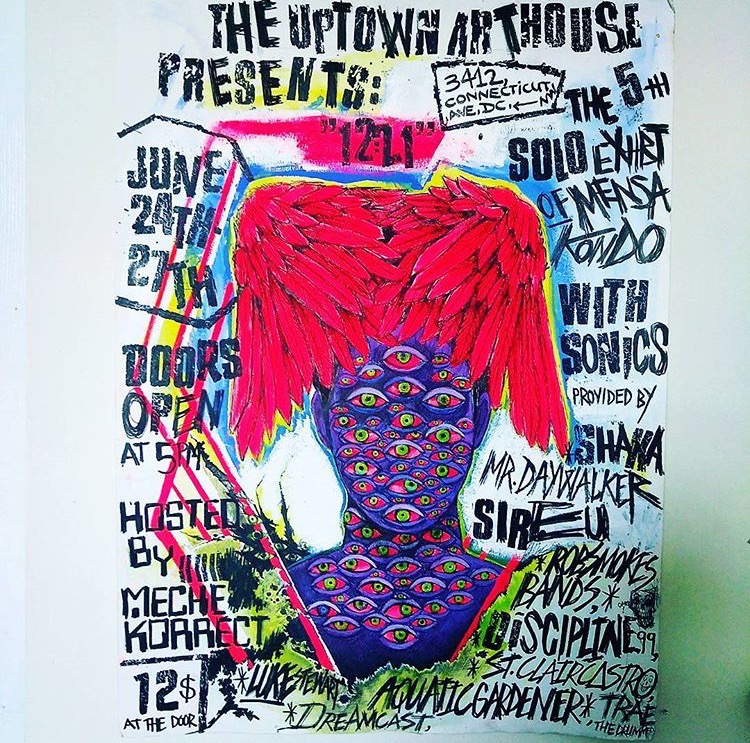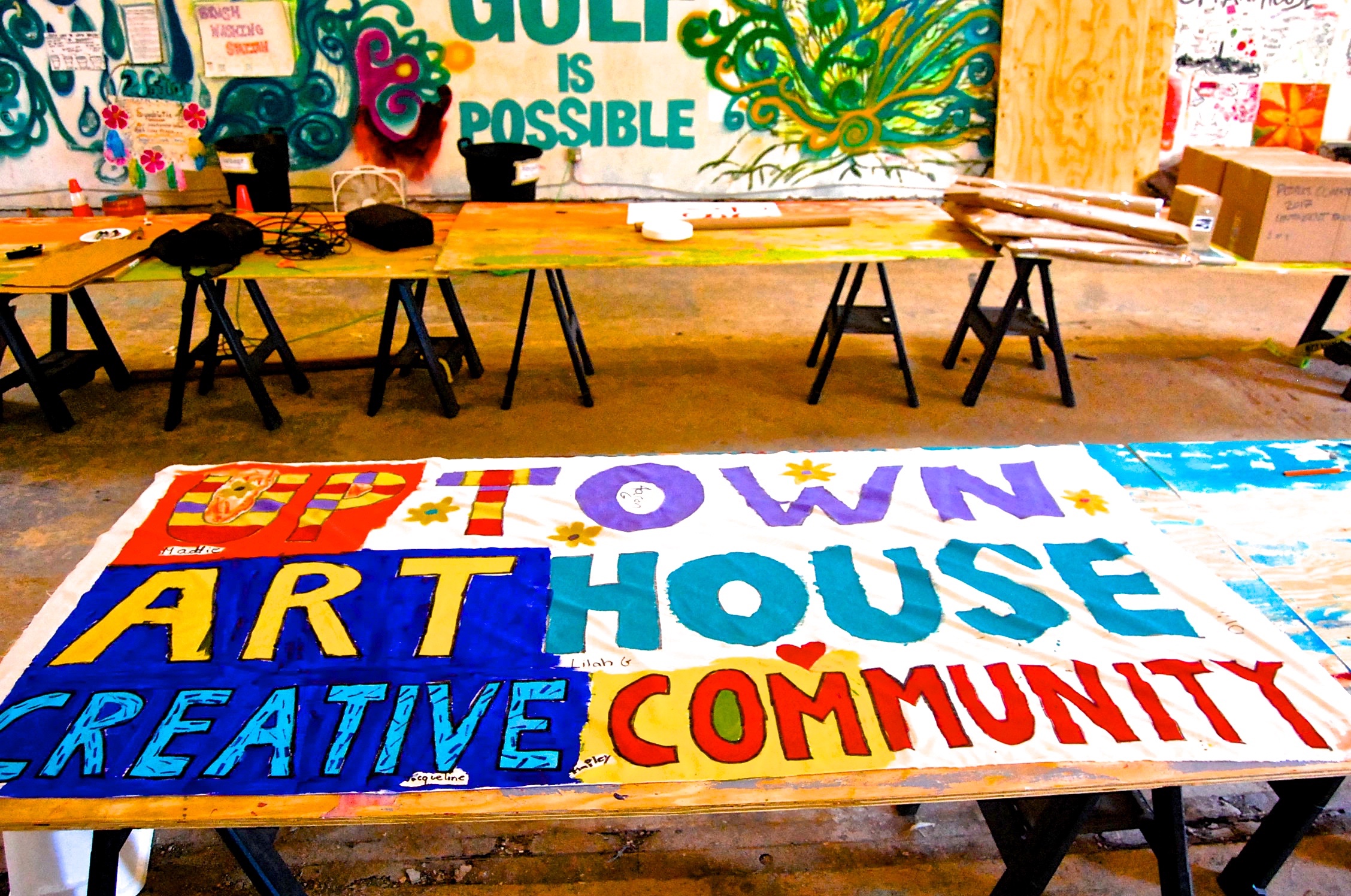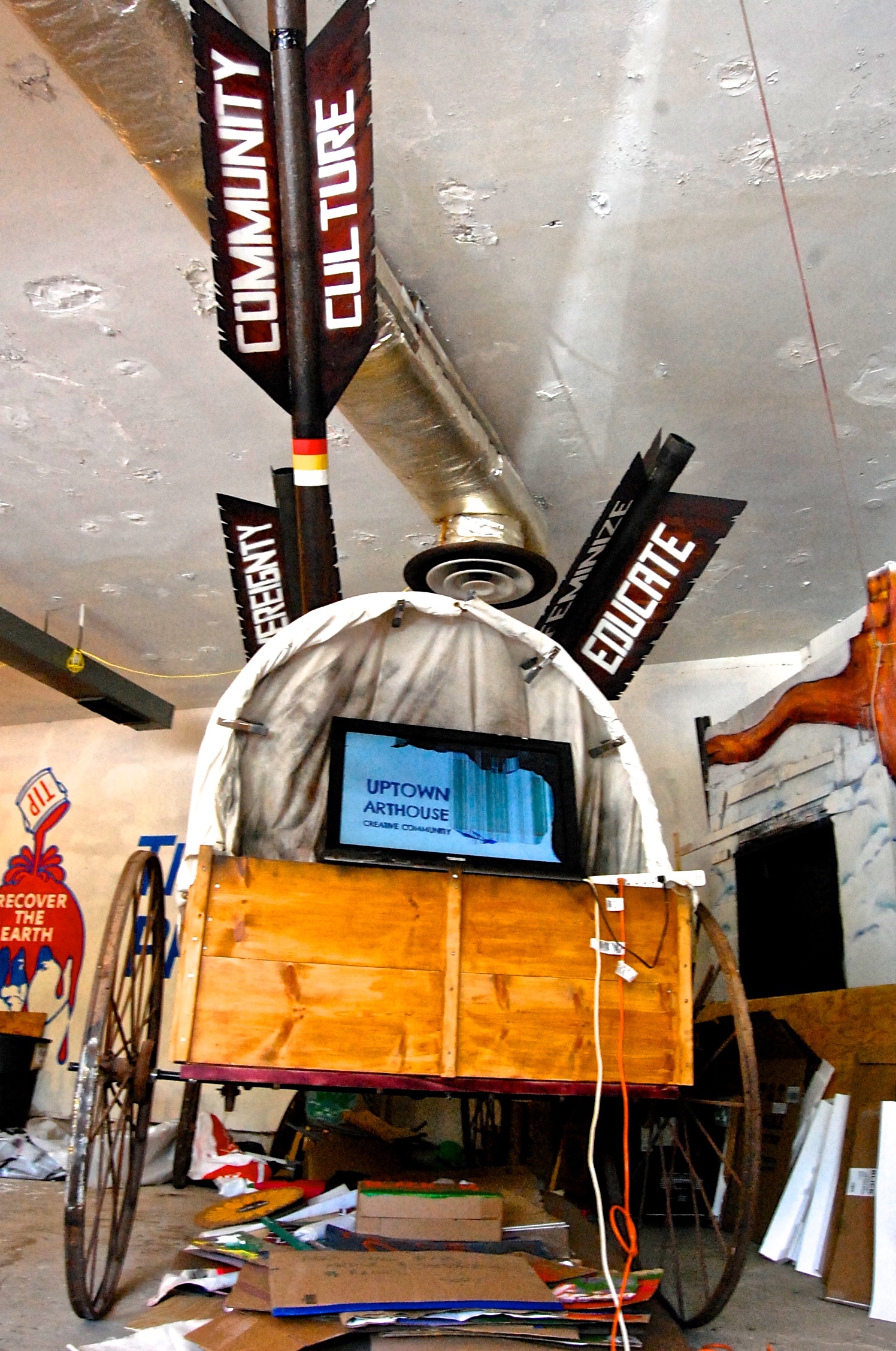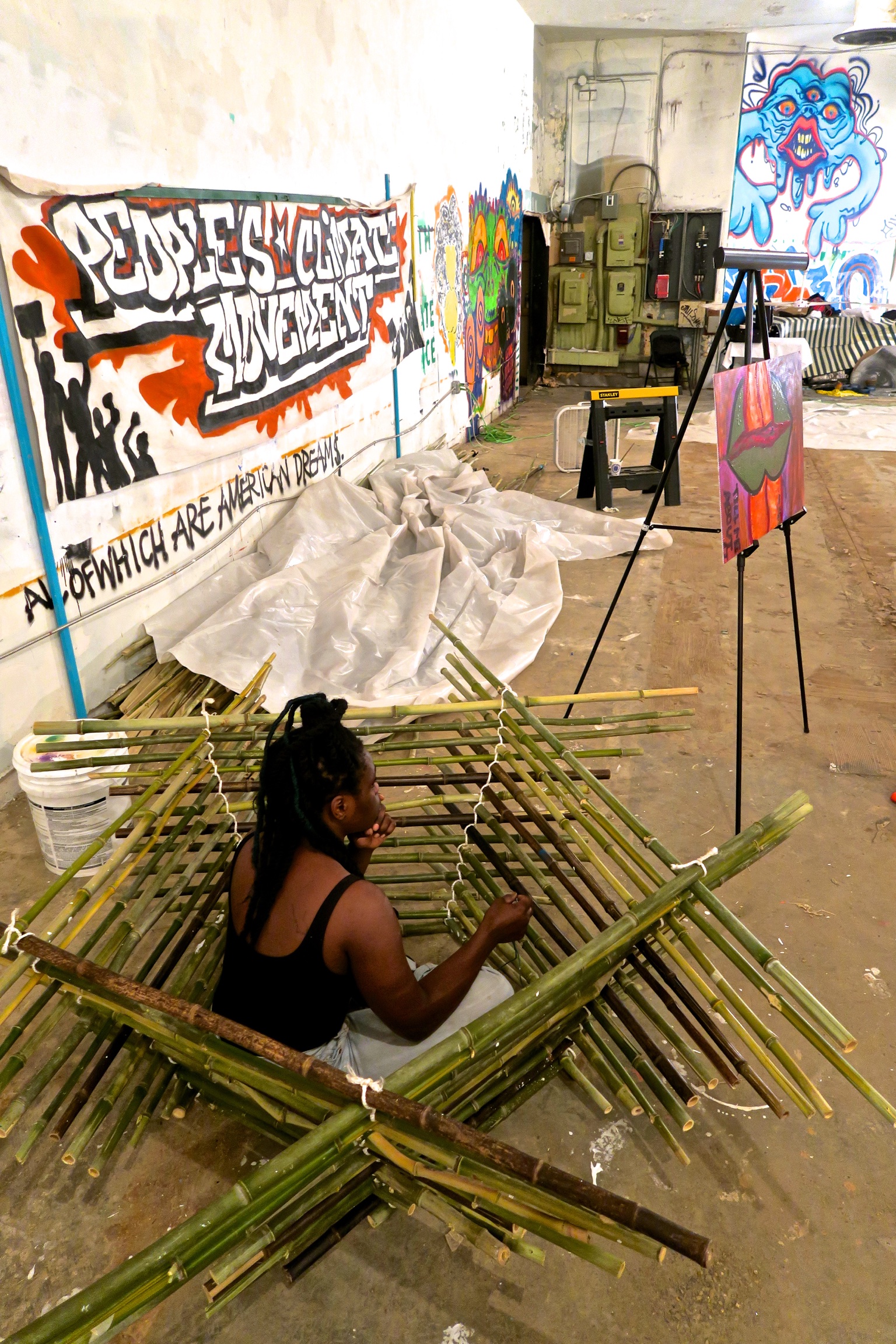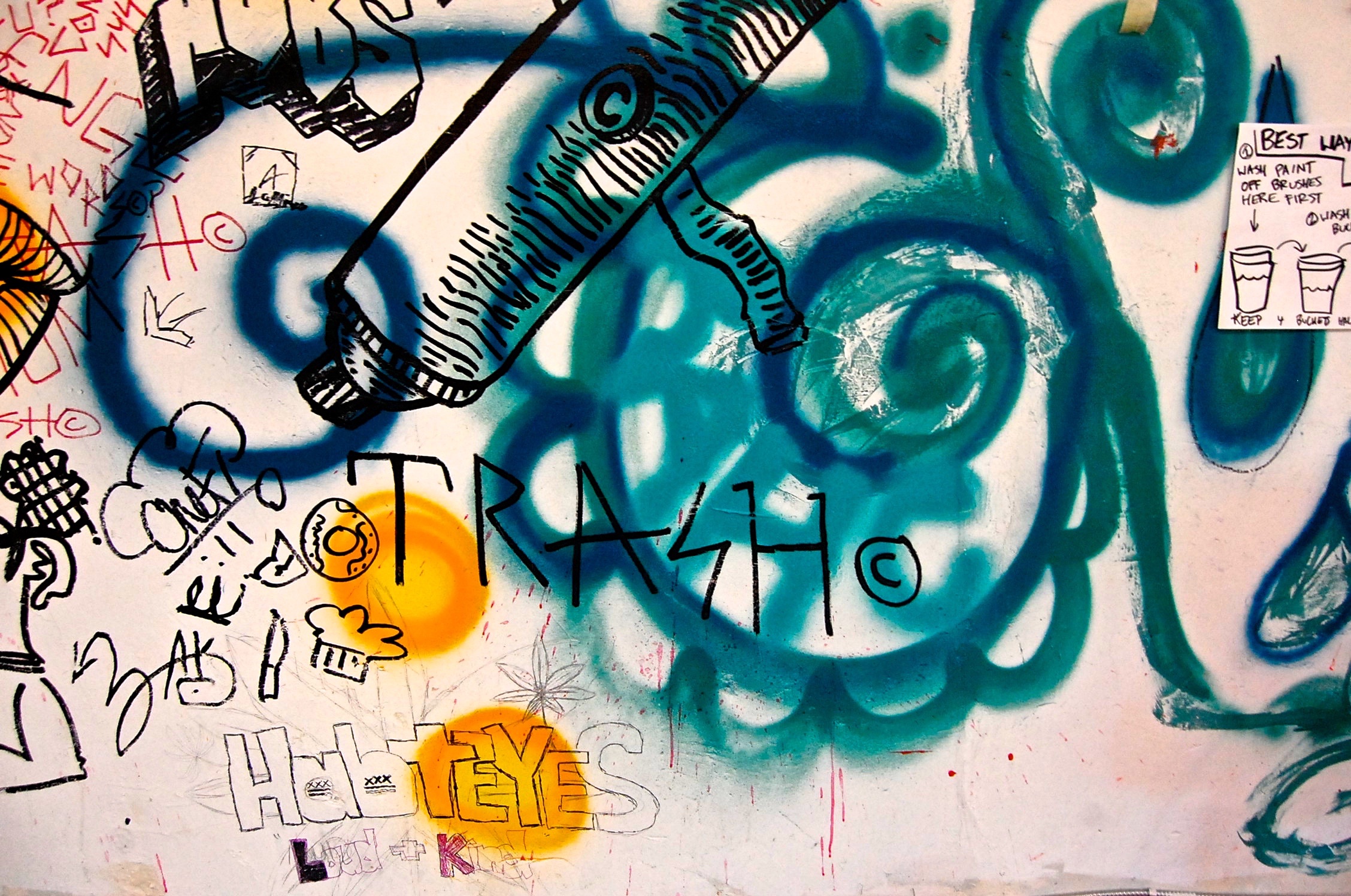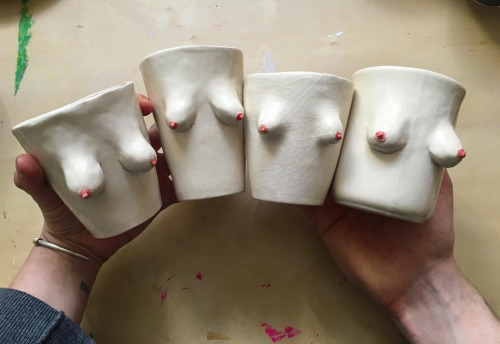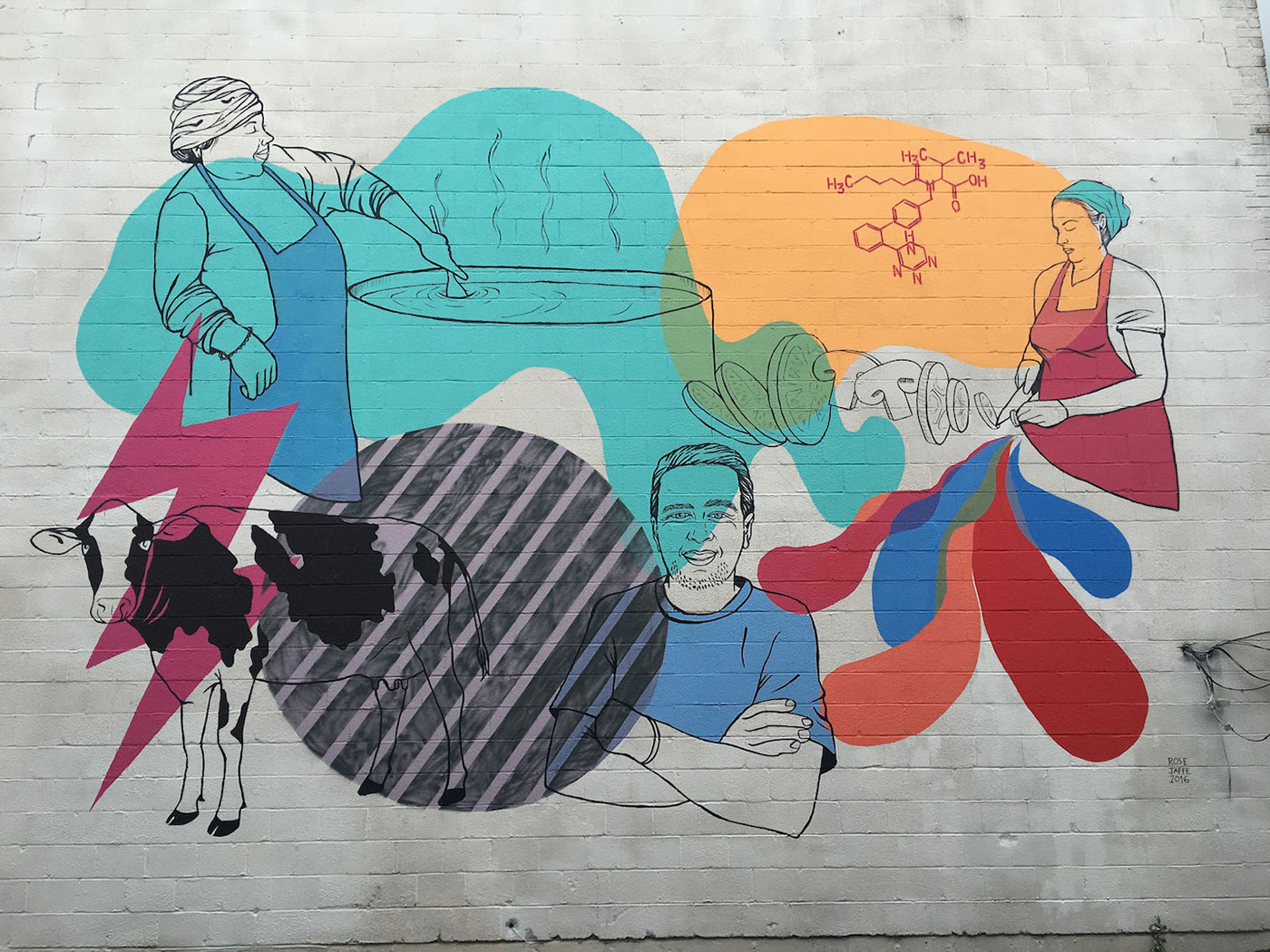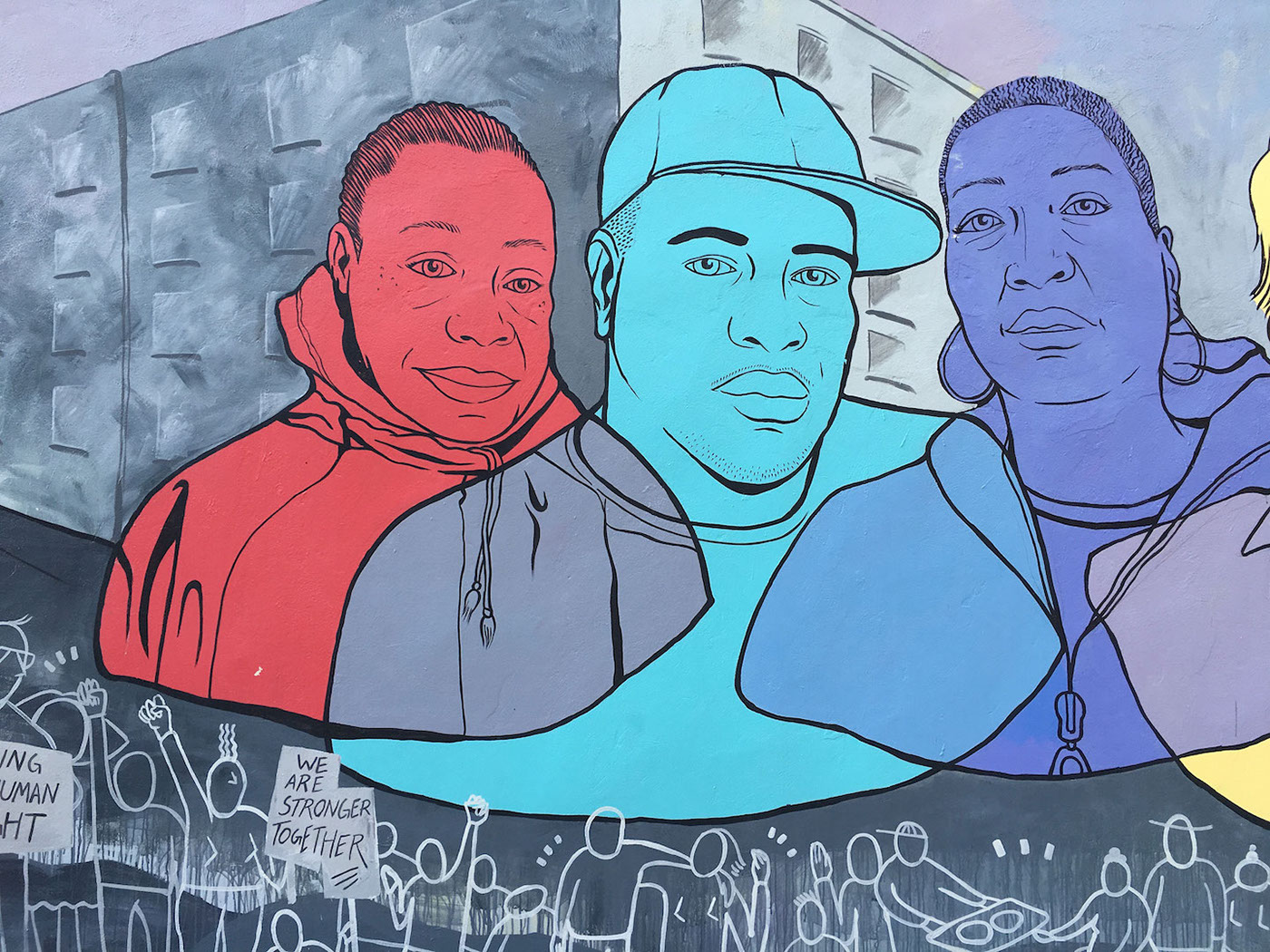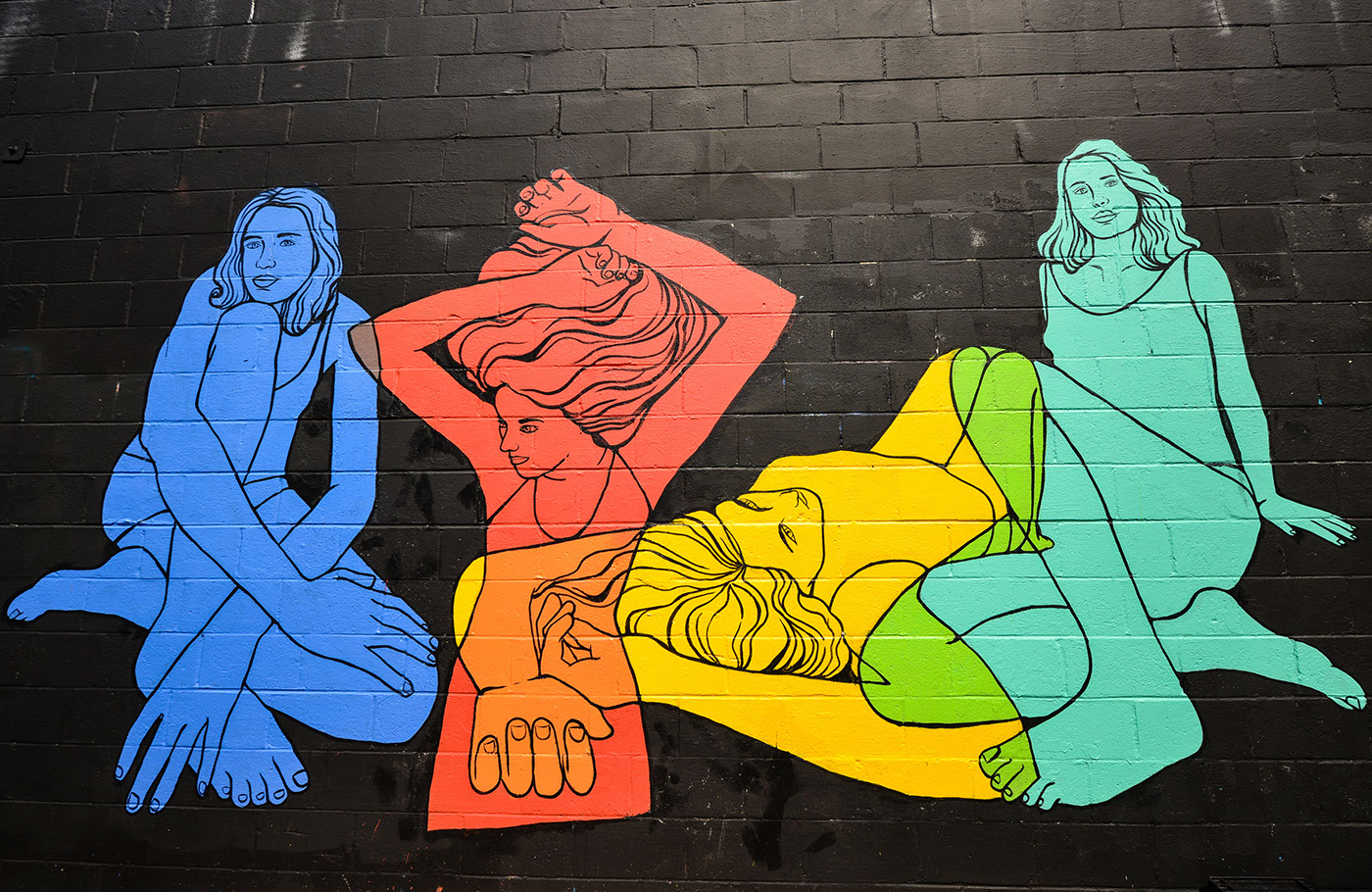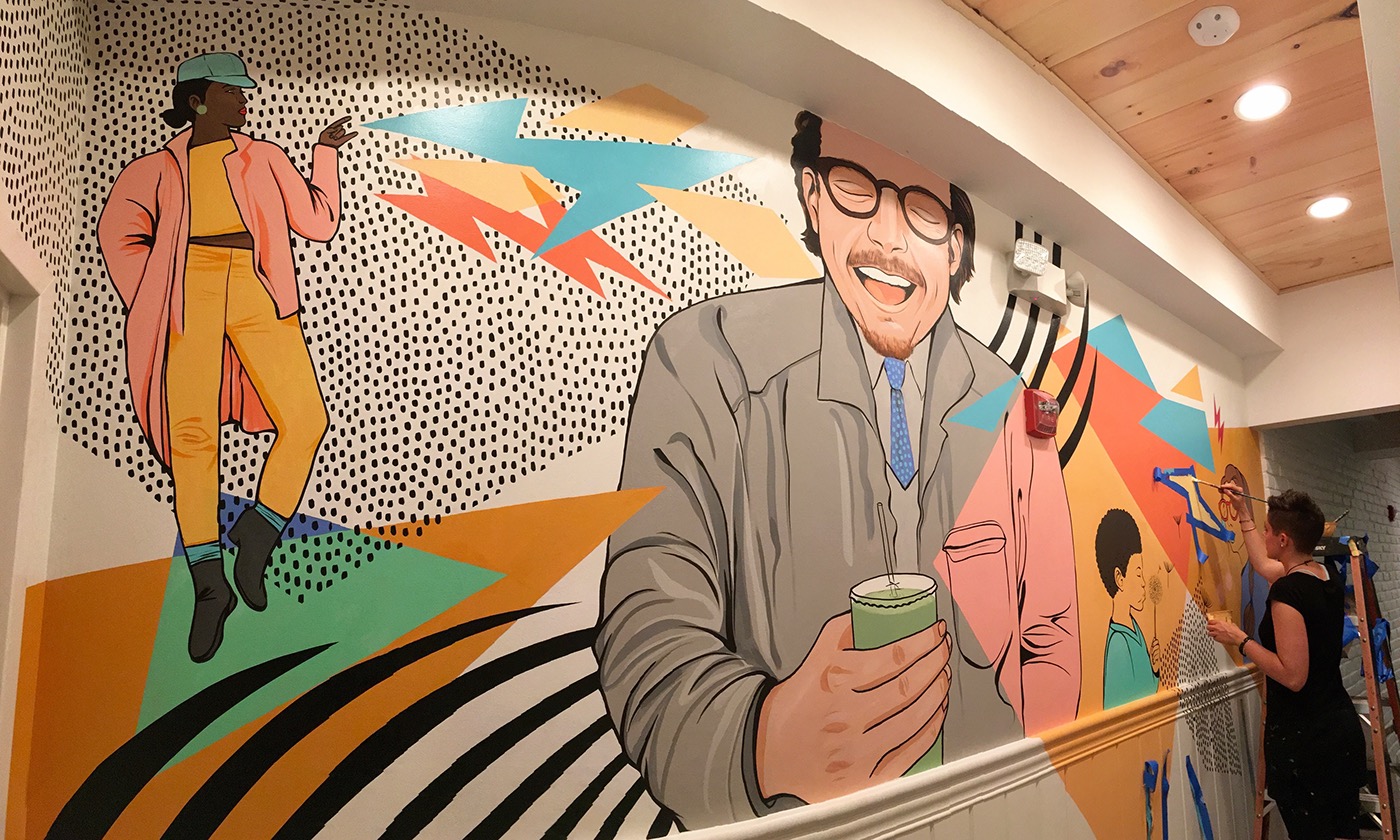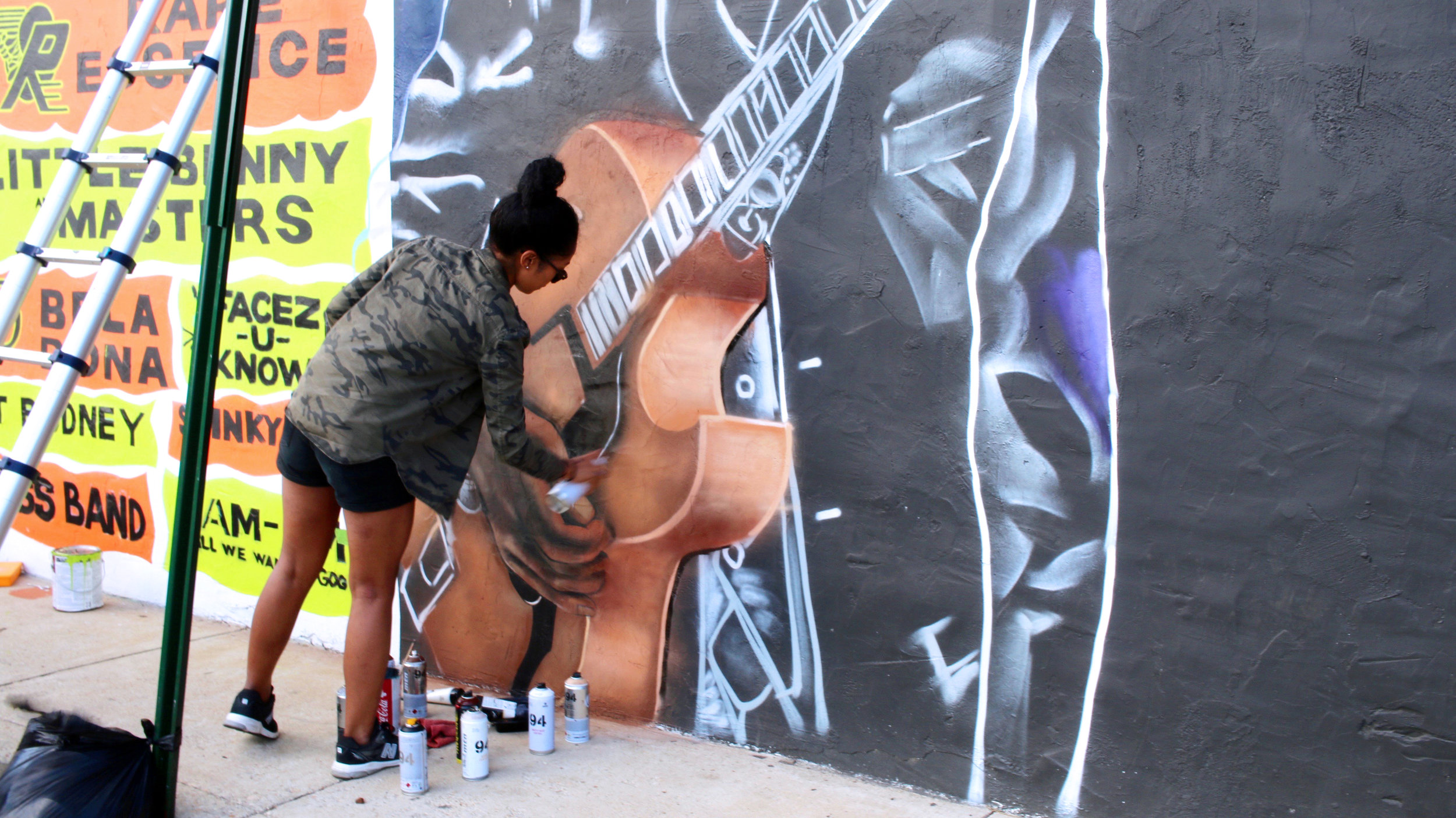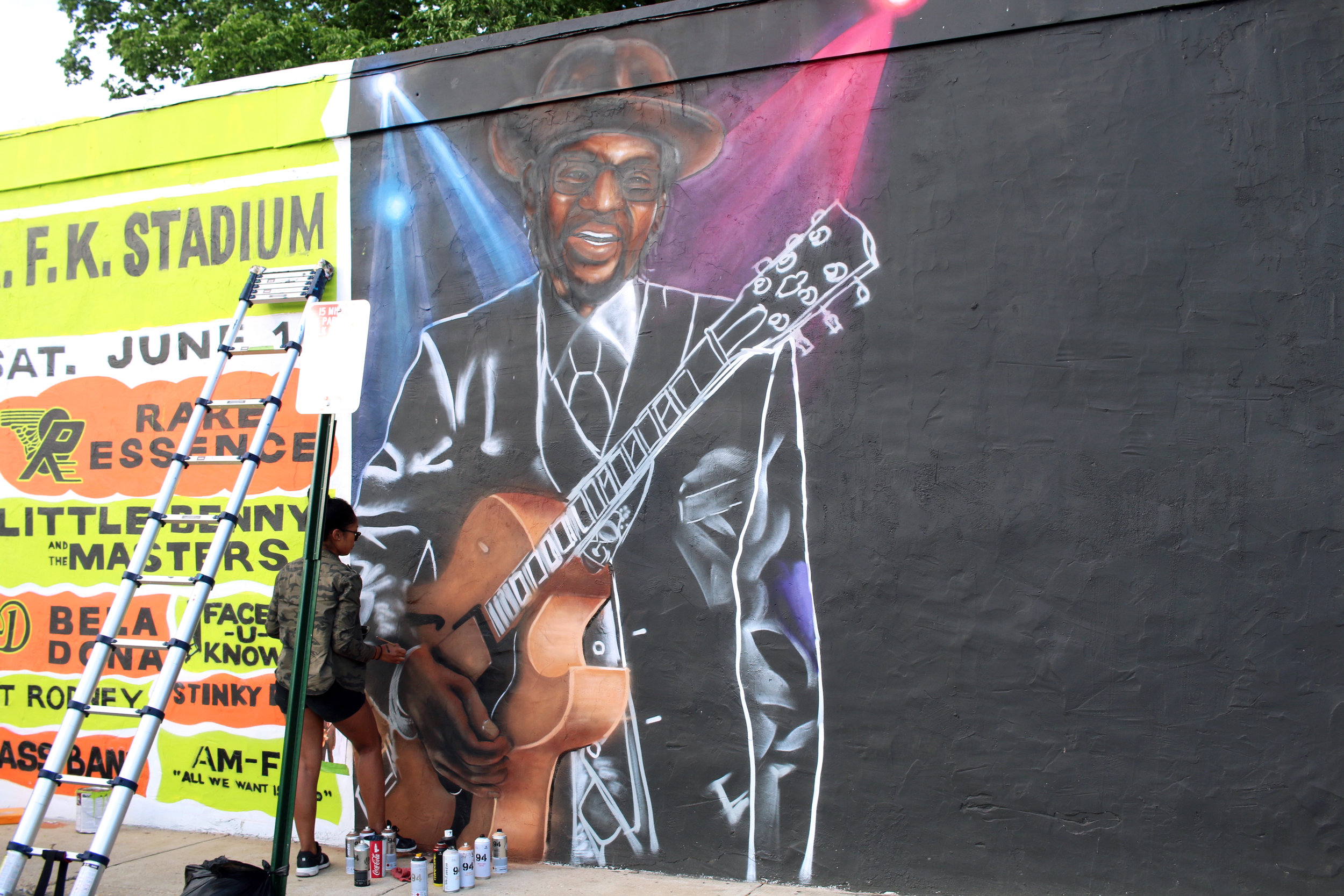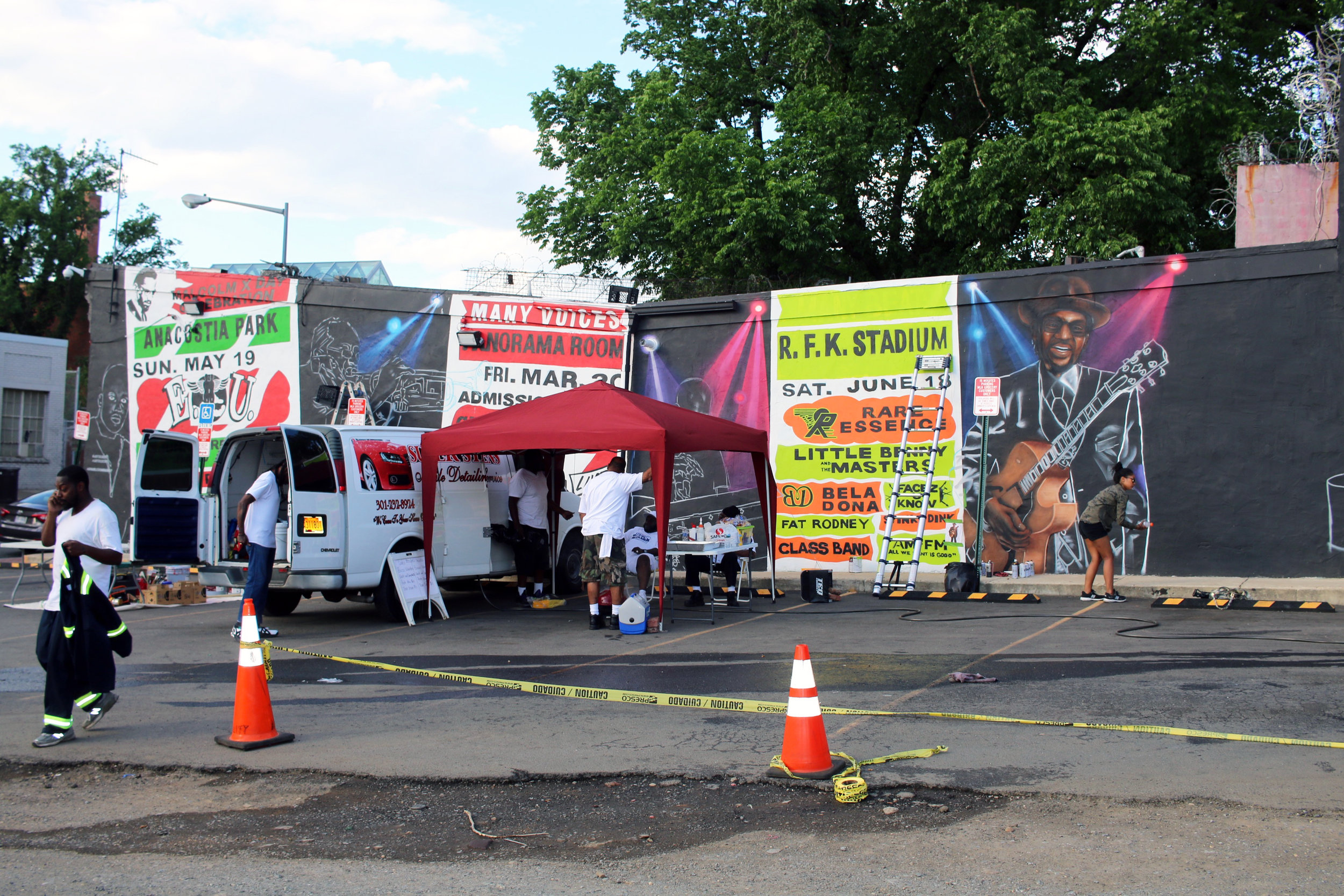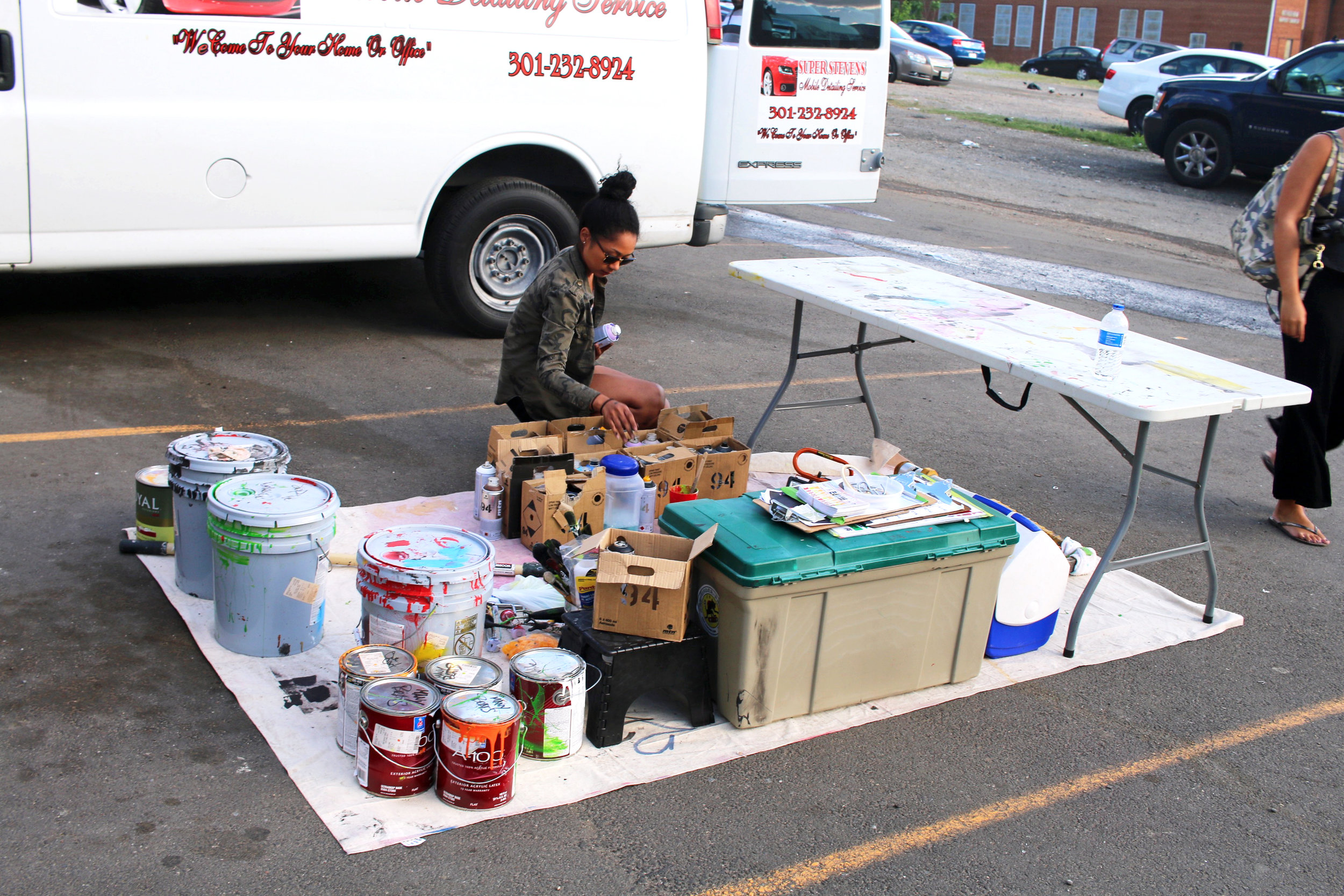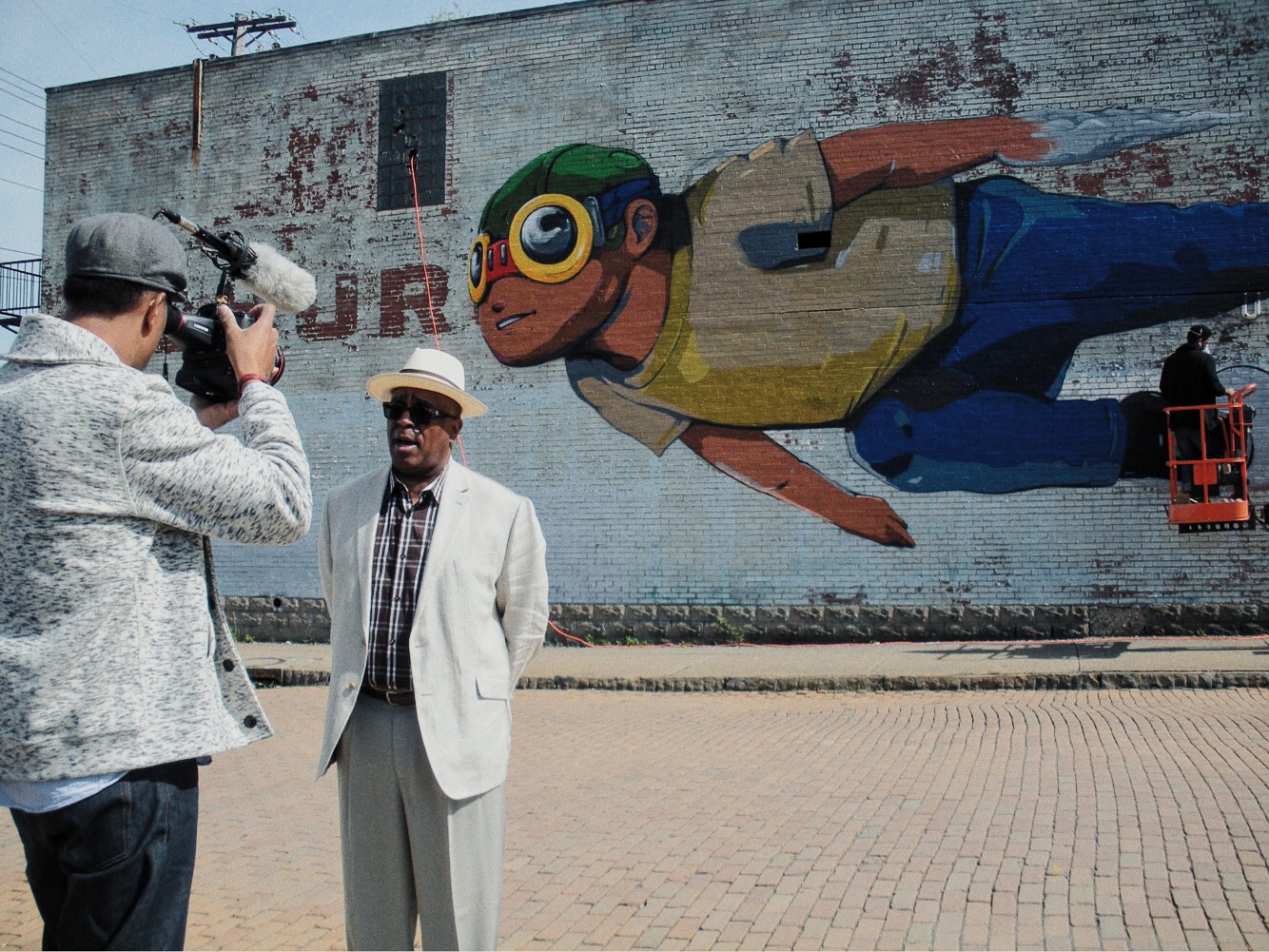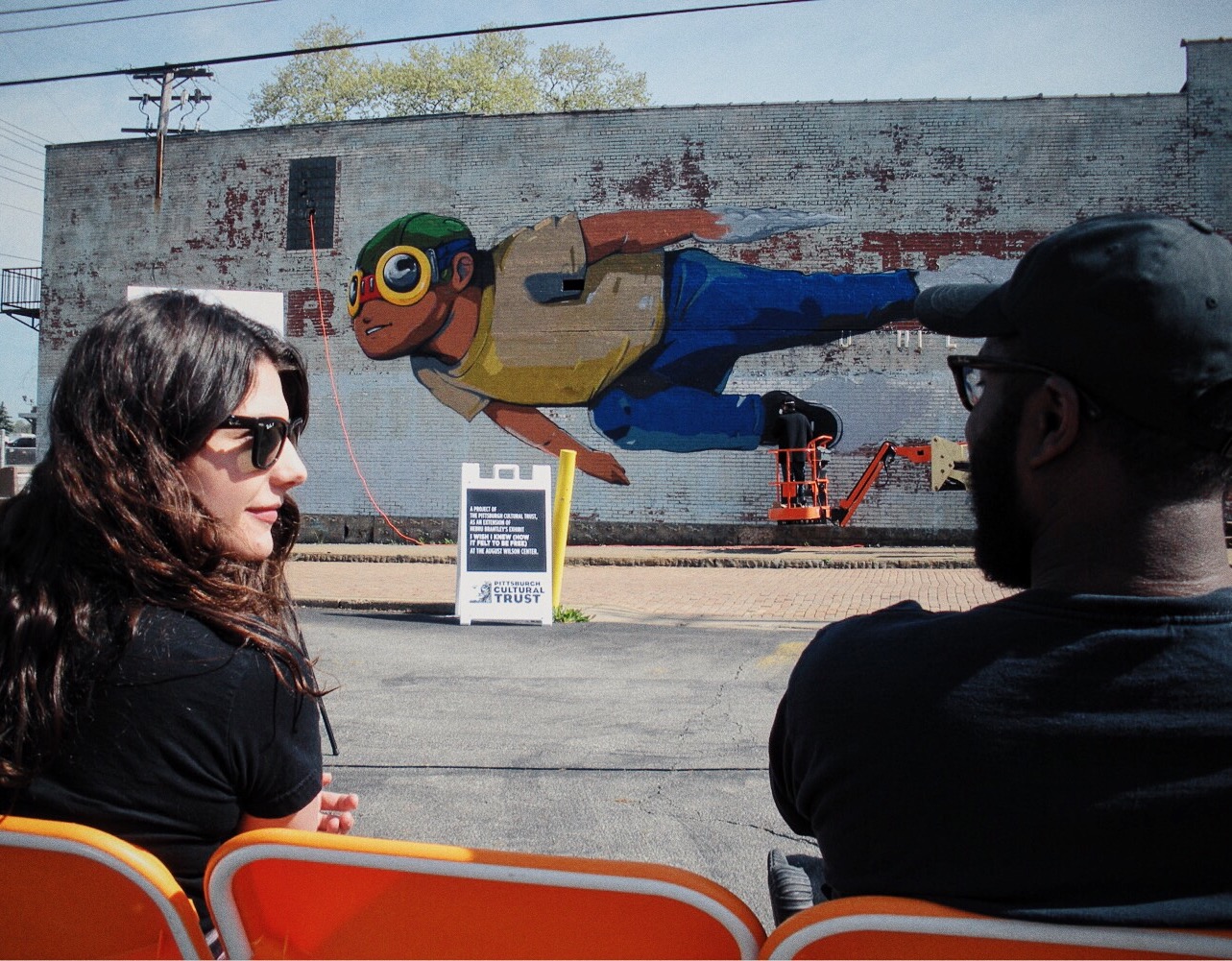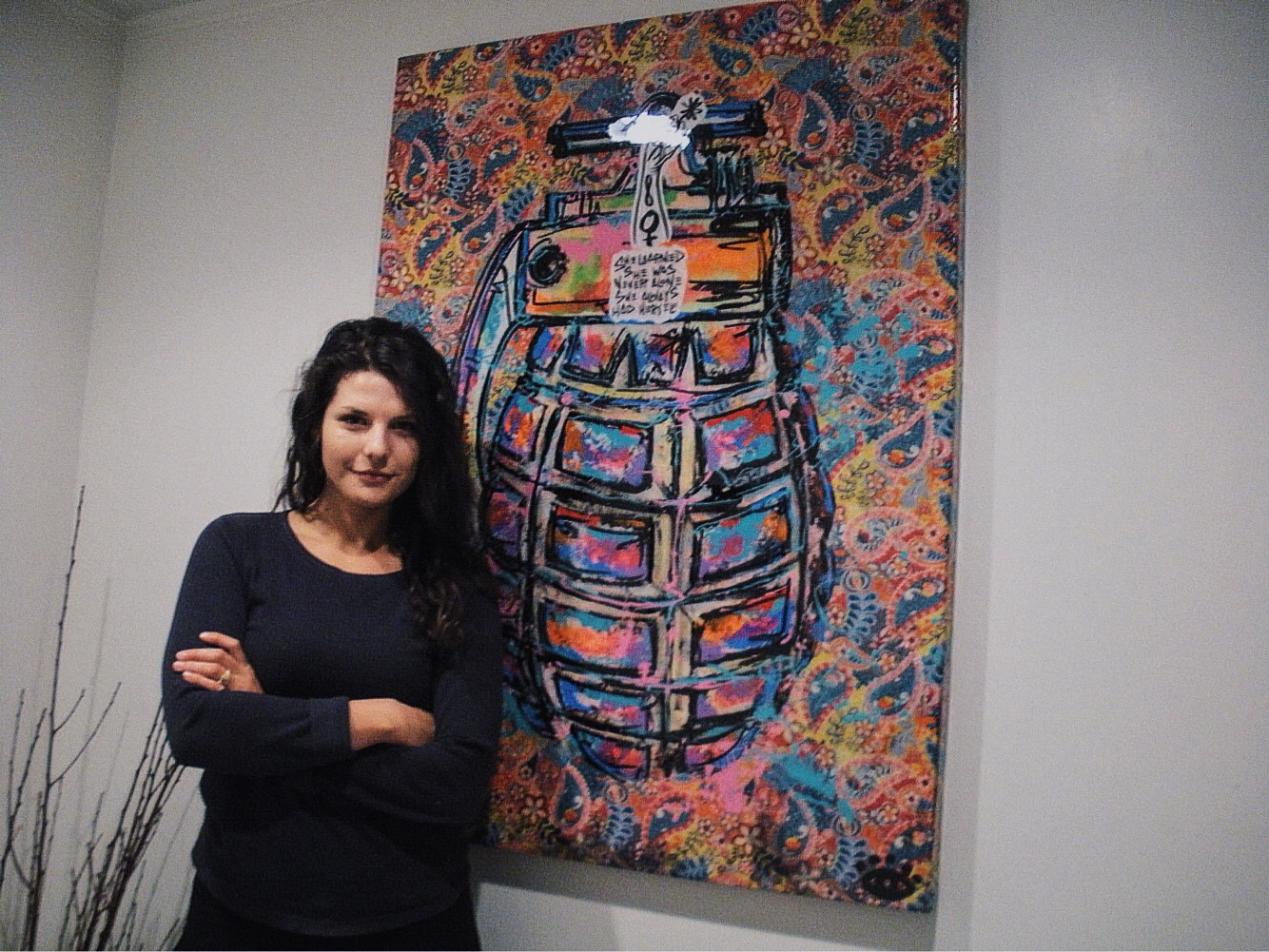Artist Mensa A. Kondo outside of Uptown Art House. Photograph by Maxwell Young
There's a skateboard with colorful paint blotches lying on the concrete floor of Uptown Art House. Mensa A. Kondo, who's currently working on his installation for his exhibition Twelve Twenty One, finishes his clementine and kick-pushes over to his mural. Vivid blue arms and hands, some featuring six fingers, rip through a green chasm that exposes the viewer to a hell-ish dimension laden with gazing eyeballs. The piece stretches across an entire wall of the Art House evoking images from the 2002 film The Scorpion King, in which Rick O'Connell duels with Mathayus (played by Dwayne "The Rock" Johnson) over the abyss of the Underworld and the thousands of demon souls.
Kondo has been a seriously trained artist since high school where he attended Duke Ellington School of the Arts in Northwest Washington, D.C. He reminisces about his old art teachers Mr. Harris and Mr. Easton with Jabari, another Duke Ellington alumnus and woodwind musician while we talk under the night sky. "I first started my style at Duke. We all went to Duke, most of us kids in the art scene here," says Kondo.
Twelve Twenty One is Kondo's fifth solo exhibition. It is an amalgamation of works new and old as well as a "manifestation" of himself as an artist. "There's pieces in the exhibit that I've had since 2011," he says. "One was my first really big piece and it's an oil painting. I don't really like oil painting that much anymore."
Sonics will be provided during the exhibition by local artists including *Discipline 99, Shaka, Luke Stewart with Trae the Drummer, and some familiar names from the Sounds of D.C. playlist like Sir E.U. with RobSmokesBands, Mr. Daywalker, Aquatic Gardner, St. Clair Castro and Dreamcast. This is also a family affair, as Mensa's sister, Meche Korrect, is hosting the show.
The following is a snippet of the conversation I had with Kondo during his installation process:
MY: It seems like music is a complimentary aspect to your process. What kind of music do you like to listen to?
MK: I've been listening to a lot of old shit, like some old psychedelic bands. I like that sound--like 'y'all on hella drugs,' but it varies. I had a Death Grips period, they're wild; they're on some cult shit, so I can't be fucking with them. I would listen to them if I had to fight a whole set of people...Pink Floyd...Bad Brains forever. I've seen them perform four times. I got to see them here and in New York a few times. The [mosh] pit was epic.
Kondo takes a moment to appreciate his Bad Brains tattoo.
MY: Who influenced you as an artist?
MK: There's a lot of people. It even goes beyond artists. I like comic artists. Geof Darrow and Frank Miller--he did Sin City. I like Miller's art, but I didn't like his writing.
MK: I do have some of Basquiat's things, though.
MY: You have some Basquiat pieces?
MK: No, things, like a jacket of his--my friend gave it to me. I did find a little bit of hair in it and I threw it away. I have some photos of him, too.
MY: Where else have you shown your work?
MK: I showed at the Warhol...
MY: Hold up. You know I'm from Pittsburgh.
MK: I needed to find some more thrift stores up that way. But yea, I won third place in this print-making competition. That was the show I was most impressed about. I've put on a few shows in D.C. by myself. I rented out a spot on U St. one time, it was $100/day. That was around 2012. Now it's a barbershop. I had something at Art Under Presser when they were still open on Georgia Avenue, and I had something at Union Arts when they were still open. I was in Philly recently, too.
MY: What's your favorite medium?
MK: I like print-making the most. You can make the print and just leave it. I love painting, too, but you can make multiple prints and print on t-shirts. It's dope.
Twelve Twenty One
June 24th-30th
Uptown Art House
3412 Connecticut Avenue, NW
Washington, D.C. 20008
